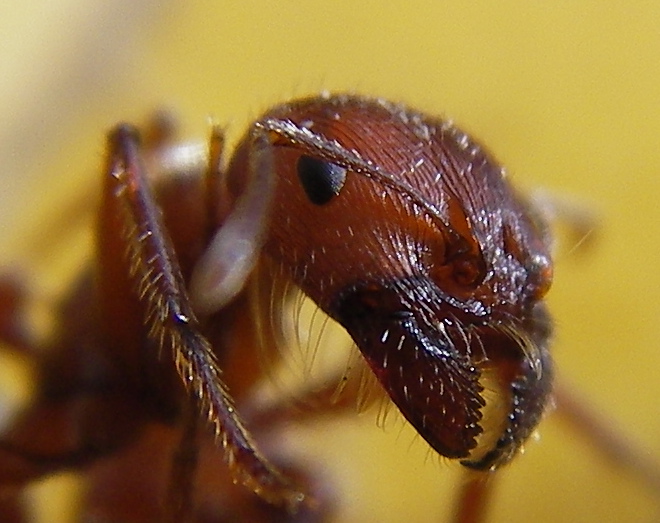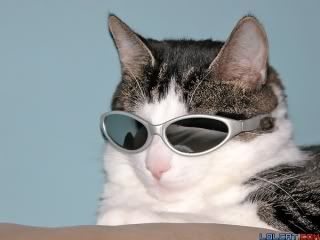
Posted on 04/30/2008 11:26:08 AM PDT by LibWhacker
Birds can tell if you are watching them - because they are watching you.
In humans, the eyes are said to be the 'window to the soul', conveying much about a person's emotions and intentions. New research demonstrates for the first time that starlings also respond to a human's gaze.
Predators tend to look at their prey when they attack, so direct eye-gaze can predict imminent danger. Julia Carter, a PhD student at the University of Bristol, and her colleagues, set up experiments that showed starlings will keep away from their food dish if a human is looking at it. However, if the person is just as close, but their eyes are turned away, the birds resumed feeding earlier and consumed more food overall.
Carter said "This is a great example of how animals can pick up on very subtle signals and use them to their own advantage". Her results are published online today (30 April) in Proceedings of the Royal Society B.
Wild starlings are highly social and will quickly join others at a productive foraging patch. This leads to foraging situations that are highly competitive. An individual starling that assesses a relatively low predation risk, and responds by returning more quickly to a foraging patch (as in the study), will gain valuable feeding time before others join the patch.
Responses to obvious indicators of risk - a predator looming overhead or the fleeing of other animals - are well documented, but Carter argued that a predator's head orientation and eye-gaze direction are more subtle indicators of risk, and useful since many predators orient their head and eyes towards their prey as they attack.
This research describes the first explicit demonstration of a bird responding to a live predator's eye-gaze direction. Carter added: "By responding to these subtle eye-gaze cues, starlings would gain a competitive advantage over individuals that are not so observant. This work highlights the importance of considering even very subtle signals that might be used in an animal's decision-making process."
Do these birds understand that a human is looking at them, and that they might pose some risk? As yet, this question has not been answered. But whether or not the responses involve some sort of theory of mind, and whether or not they are innate or acquired, the result is that starlings are able to discriminate the very subtle eye-gaze cues of a nearby live predator and adjust their anti-predator responses in a beneficial manner.
This research was funded by the Natural Environment Research Council and the University of Bristol.
Note: This story has been adapted from a news release issued by Bristol University

bird brains!
I suppose many of the spring chicks fly off elsewhere in the fall; (they usually have have 2 hatches during the summer of about 10-15 chicks each female) I've often seen some scooped up by owls and coyotes, or find a pile of feathers here and there, but out of the hundred or so that literally infest my forest in the fall, (I have a 2500 acre spread of which about 1500 is forest) there always seems to be a group of 25 or so that hang around all winter eating from the fruit trees in my yard site.
I have tried shooting them with a BB gun, but they are smart and fast and I've had no luck. An online publication suggested not feeding any of the birds at all for about a week and maybe the cowbirds would go somewhere else.
Does anyone have a practical suggestion for me?
Carolyn
Anyone who has watched birds even as a passing idle glance in the back yard knows this.
Why did they have to spend money on a useless endeavor? All they would have had to do is to ask anyone who watched birds even for a few moments.
Idiots.
When a big old owl hawk or eagle comes however, there is no eye contact. Just a soft "thud" sound and a bunch of feathers fluttering to the ground as the stealth bomber swoops in a snatches one of the guards or feeders.
the predator birds are incredibly fast, especially the owls. They are like bullet. All those fluffy feathers fold up real tight when they dive in.
Someone gave us a guinnea pig to babysit one time, and not thinking, I put it out in the yard to feed on a clump of fresh clover. I turned my back for just a second to tell my dog to lay down; then I heard the "thud" and the guinea pig was no more...

Your pictures and captions are TOOO FUNNY!
Thanks Laz!

LOL

Just did a cursory glance about them and the first thing that came to mind was to make lots of fake nests and put ‘em EVERYWHERE in your yard.
Then the cowbirds would have to try and figure out which are the real nests and which are the offering plates for the local snake populations and other predators.

As prey creatures, it's in their best interest to be fully aware of their surroundings. That surely includes any loving gazes from their adoring humans.
Buster, you ROCK!
You need more "BBs" per round.

Carolyn
LoL! well, maybe sometimes wing tip marks. That one must have grabbed the overweight easter bunny and his basket of eggs...
Carolyn
You need a fully equipped male barn cat. I promise you, your problem will be solved.
Carolyn
Disclaimer: Opinions posted on Free Republic are those of the individual posters and do not necessarily represent the opinion of Free Republic or its management. All materials posted herein are protected by copyright law and the exemption for fair use of copyrighted works.